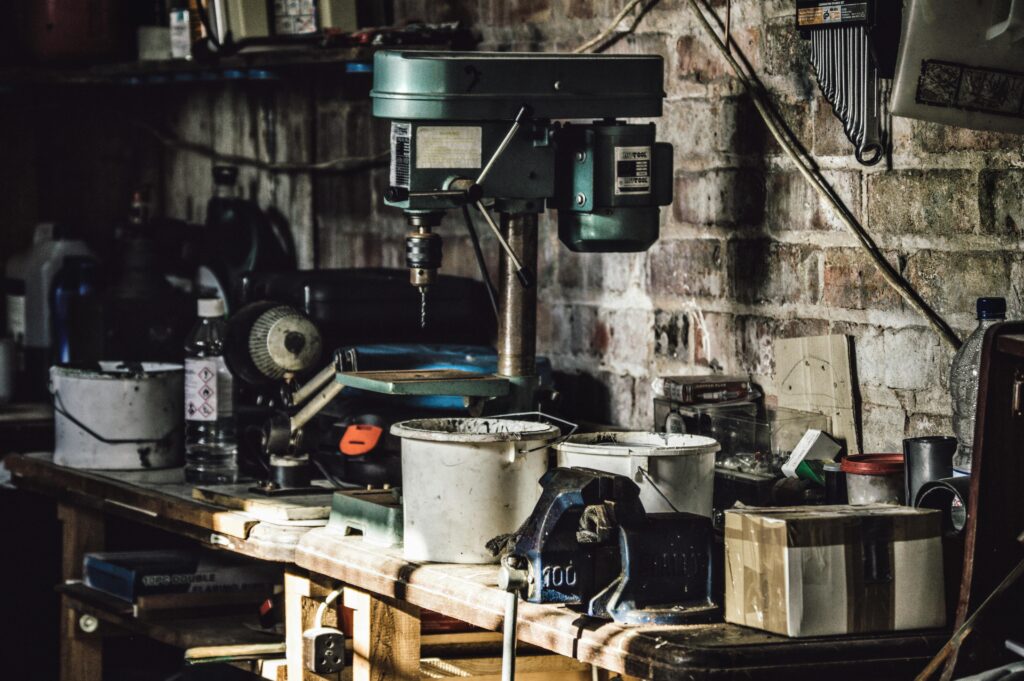Garages often serve as multifunctional spaces: a place to park your car, store tools, and tackle DIY projects. However, without proper organization, this valuable space can quickly become cluttered and chaotic. One effective solution is to build a DIY rolling workbench. Not only does it provide ample workspace, but it also adds mobility and flexibility to your garage setup. In this guide, we will walk you through the steps to create a DIY rolling workbench that meets your needs while transforming your garage into a well-organized haven for creativity and productivity.
Why a Rolling Workbench?
Before diving into the construction process, it’s essential to understand the advantages of a rolling workbench. Unlike stationary benches, a rolling workbench allows you to move your workspace wherever you need it. Whether you’re working on intricate projects or need extra room for cutting materials, a rolling workbench adapts to your requirements. Furthermore, it can be easily tucked away when not in use, freeing up valuable floor space.
Planning Your DIY Rolling Workbench
Step 1: Determine Your Needs
The first step in creating your DIY rolling workbench is to assess your specific needs. Consider the types of projects you typically undertake. Do you require a large surface area for cutting wood, or do you need built-in storage for tools? By identifying your primary functions, you can design a bench that serves multiple purposes.
Step 2: Gather Materials and Tools
Once you have a clear idea of what you want, gather the necessary materials. For a basic DIY rolling workbench, you will need:
- Plywood or MDF for the tabletop
- 2×4 lumber for the frame
- Heavy-duty casters for mobility
- Wood screws and brackets for assembly
- Wood glue (optional)
- Sandpaper and wood finish (optional for aesthetics)
In terms of tools, you’ll need a saw, drill, measuring tape, and a level. If you have a miter saw, it can greatly enhance your accuracy and speed.
Building Your DIY Rolling Workbench
Step 3: Measure and Cut
Start by measuring and cutting your lumber according to your design. The standard height for a workbench is about 36 inches, but you can adjust this based on your preferences. The size of the tabletop can vary, but a good starting point is around 24 inches deep by 48 inches wide.
Use a saw to cut the 2x4s for the frame. You’ll need two longer pieces for the sides, two shorter pieces for the front and back, and additional pieces for support. Remember to double-check your measurements before cutting to avoid wasting materials.
Step 4: Assemble the Frame
Once your pieces are cut, it’s time to assemble the frame. Lay out the longer pieces parallel to each other and connect them with the shorter pieces using wood screws. This creates a rectangular frame that will support your tabletop.
Add additional support beams along the center if you want extra stability. It’s essential to ensure the frame is level and square. This step is crucial as it forms the foundation of your workbench.
Step 5: Attach the Tabletop
Now it’s time to attach the tabletop. Place your plywood or MDF on top of the frame and secure it using wood screws. If you opted for wood glue, apply it to the edges before placing the tabletop for additional strength.
After securing the tabletop, sand down any rough edges for safety and comfort. If desired, you can apply a wood finish to protect the surface and enhance its appearance.
Step 6: Add Casters
To make your workbench mobile, install heavy-duty casters on the bottom of the legs. Choose casters that can support the weight of your bench and any tools or materials you’ll be using. Make sure to select casters with brakes to keep the workbench stationary when you need it to be.
Final Touches
Step 7: Organize and Customize
Now that your DIY rolling workbench is complete, it’s time to customize it to fit your workflow. Consider adding hooks, shelves, or pegboards for tool storage. You can also designate specific areas for different projects to keep everything organized.
Step 8: Enjoy Your New Space
With your DIY rolling workbench in place, you’ll find that your garage transforms into a more functional and inviting space. Whether you’re woodworking, painting, or tackling automotive projects, this new addition will make your tasks more manageable and enjoyable.
Conclusion
A DIY rolling workbench is an excellent investment for anyone looking to maximize their garage’s functionality. By following this complete guide, you’ll not only create a valuable workspace but also gain a sense of accomplishment and pride in your DIY skills. Embrace the flexibility and organization that a rolling workbench offers, and watch your garage transform into a haven for creativity and productivity!



